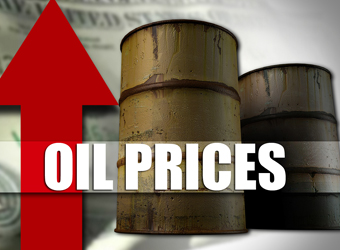Brent crude oil prices were near two-year highs on Wednesday as OPEC has significantly improved compliance with its pledged supply cuts and Russia is also seen keeping to the deal.
Brent futures, the international benchmark for oil prices, were at $61.15 per barrel at 0504 GMT, up 21 cents, or 0.34 percent, since their last close and near the $61.41 a barrel two-year high from intraday trading on Tuesday. Brent is up almost 38 percent since its 2017-lows last June.
U.S. West Texas Intermediate (WTI) crude was at $54.65 a barrel, up 27 cents, or 0.5 percent, and close to February highs. It is up almost 30 percent since 2017-lows in June.
Physical oil markets are also strong, with top exporter Saudi Arabia expected to hike December crude prices for customers in Asia to levels last seen in 2013 or 2014, a Reuters survey showed.
Arab Light’s December official selling price to at least 90 cents a barrel above Oman/Dubai quotes, the survey of five refiners showed. That would be the highest premium since $1.65 in September 2014, according to Reuters data.
Bullish sentiment has been fueled by an effort this year lead by the Organization of the Petroleum Exporting Countries (OPEC) and Russia to hold back about 1.8 million barrels per day (bpd) in oil production to tighten markets.
While compliance was low during the first half of the year, supplies have been reduced significantly since.
OPEC’s October output fell by 80,000 bpd to 32.78 million bpd, putting adherence to its pledged supply curbs at 92 percent, up from September’s 86 percent.
Russia is also seen to be in compliance with cutting its output by around 300,000 bpd below October 2016 levels of 11.247 million bpd.
Trade data shows that global oil markets have been slightly undersupplied during the past quarters, resulting in inventory drawdowns.
What is unclear is how countries involved in withholding production will exit the supply-cutting deal, which ends in March 2018. Saudi Arabia and Russia support extending the agreement to potentially cover all of next year.
Should participants after that return to full capacity and U.S. output also grow, a supply glut could return.
“We could rapidly … go from a predicted deficit of around 260,000 barrels to a surplus of close to 1.5 million barrels. Prices would undoubtedly collapse,” said Matt Stanley, a fuel broker at Freight Investor Services.
Another factor will be U.S. output, which has risen by almost 13 percent since mid-2016 to 9.5 million bpd.
“U.S. crude oil production is 410,000 bpd below the April 2015 peak of 9.62 million bpd. We expect production to surpass this level before year-end,” Barclays bank said. Source: Reuters
Source: Reuters


